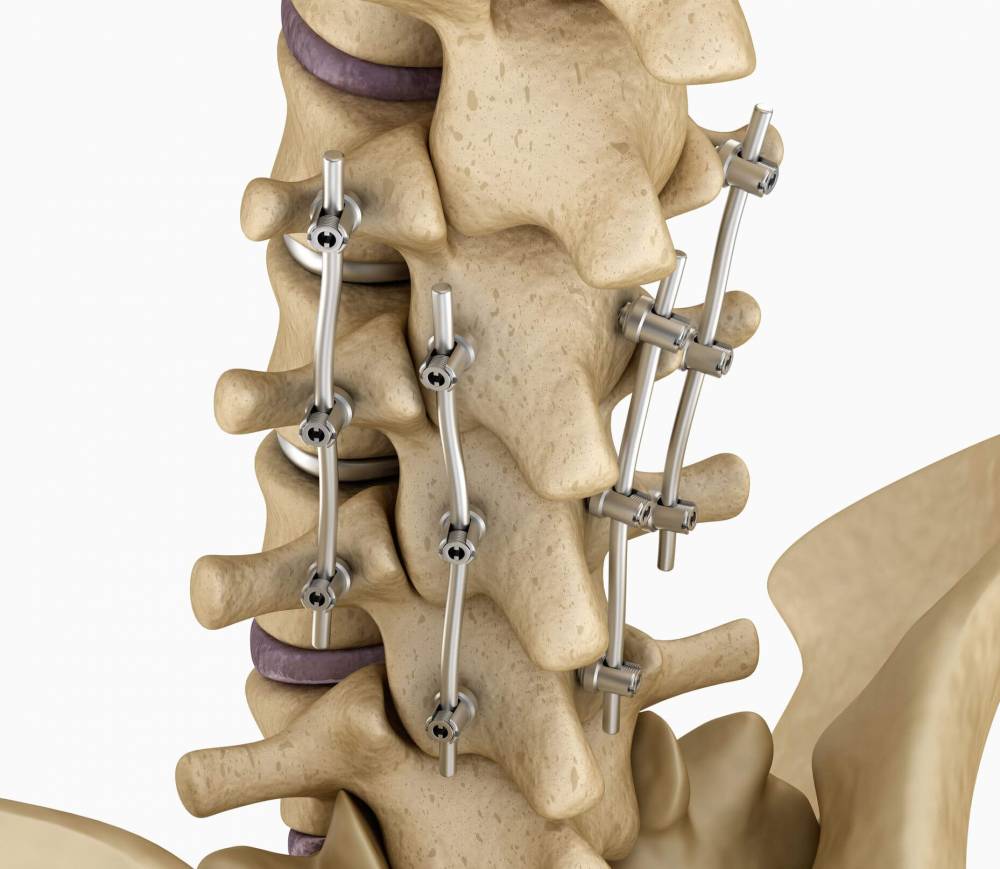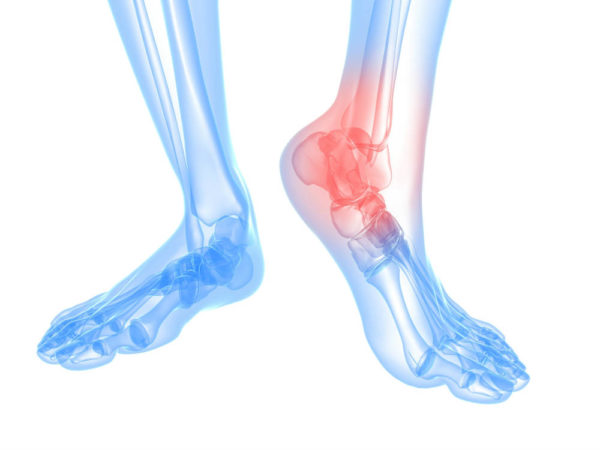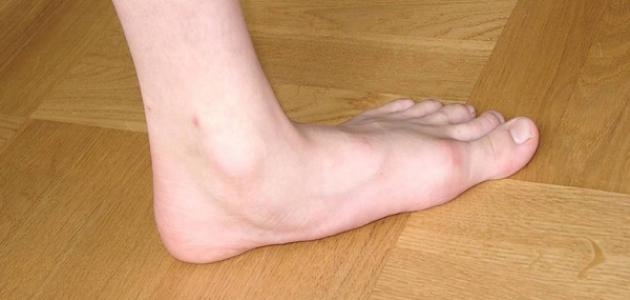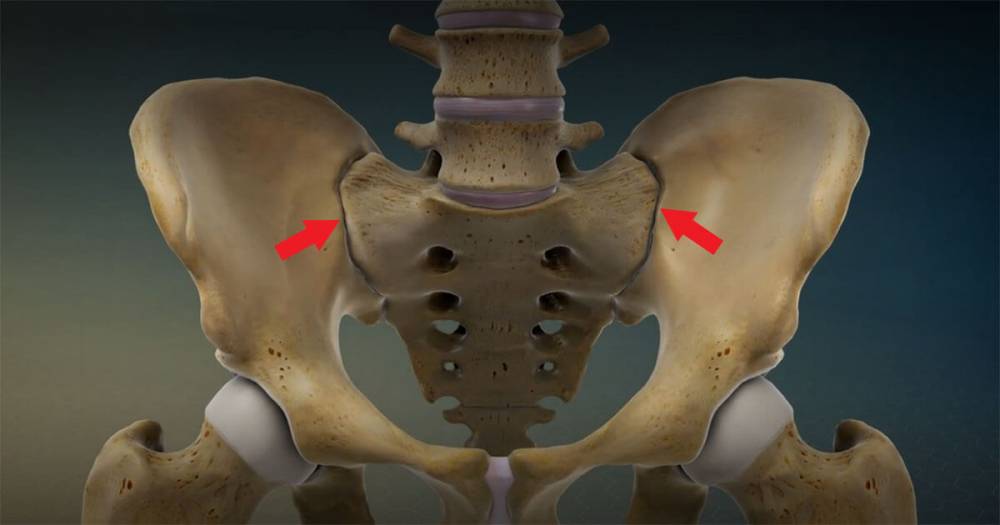Understand the Risks of Spinal Fusion and When to Bend After a Spinal Fusion Surgery?
Spinal Fusion Complications
- Surgical Complications: Spinal fusion is a serious and intricate procedure, thus it may lead to surgical complications. Patients might suffer from instability in the spine or breakage in the fused vertebrae, necessitating additional surgeries to correct these issues.
- Anesthesia Risks: The procedure involves anesthesia, which carries its own risks. Allergic reactions to the drugs used in anesthesia, as well as changes in blood pressure and heart rate, can occur.
- Bleeding: Bleeding may occur during or after spinal fusion surgery. Managing this bleeding may require additional medical procedures.
- Blood Clots: The risk of blood clotting may increase after spinal fusion surgery. This might require the use of anticoagulant medications or additional procedures to prevent clots.
- Infection: Infections can occur at the site of surgery, the spinal fusion site. This may require treatment with antibiotics or additional surgical procedures.
- Impact on Natural Spinal Movement: Spinal fusion can restrict movement in the fused area of the spine, which can affect normal back movement and require extra effort to compensate.
- Psychological Complications: Spinal fusion can lead to negative psychological effects on the patient, such as ongoing pain, a sense of weakness, or dependence on others for daily movement.
It is important to note that before undergoing any surgical procedure, patients should be informed of all potential damages and complications. They should consult a specialist and ask all questions and express concerns before making a decision. Providing reliable and transparent medical information helps empower patients to make appropriate decisions about their treatment.
Post-Operative Problems of Spinal Fusion Spinal fusion is a common surgical procedure for individuals with spine issues. However, this surgery can lead to some problems and challenges that patients must face and manage after the operation. In this article, we review some common post-operative problems of spinal fusion.
- Pain and Stiffness in the Back: Patients may suffer from pain and stiffness in the back after spinal fusion surgery. The pain can be severe initially but usually improves gradually over about 4 weeks. Patients are advised to take medications prescribed by their doctor to alleviate pain and consult about physical therapy and exercises that can help slowly regain back flexibility.
- Movement Restrictions: Spinal fusion surgery may impose certain restrictions on back movement. It might be difficult to move the back normally after the operation, affecting the ability to perform daily activities as usual. Patients are advised to avoid excessive movements and heavy backloading during the recovery period. They may also need to use supportive equipment like lumbar support belts to reduce strain on the spine.
Difficulties in Performing Daily Activities: Patients may experience difficulties in performing simple daily activities after a spinal fusion surgery, such as sitting, standing, and bending. Patients are advised to make slow and steady movements to avoid straining the back. They can also consult a physical therapist to learn proper stabilization techniques and enhance their ability to perform daily activities.
Dealing with Psychological Effects: Spinal fusion surgery may bring psychological effects on patients, such as anxiety and depression. Patients might feel frustrated about not being able to perform their usual activities in the same way as before the surgery. In such cases, it is advisable to speak with a psychological counselor or seek emotional support from family and friends to cope with these psychological effects.
Patients should know that overcoming post-spinal fusion surgery issues requires patience and adherence to the doctor’s instructions. It is also important for them to follow up with check-ups and appointments set by the doctor to ensure proper healing.
How Long Does the Pain Last After Spinal Fusion Surgery?
When searching online for an answer to the question, “How long does the pain last after spinal fusion surgery?” it is difficult to find a specific answer due to the multitude of factors that affect the duration of vertebral fusion after surgery and their integration into a single solid bone. However, some general information about the expected healing period can be provided:
Fusion of Stabilized Vertebrae: After spinal fusion surgery, the vertebrae that have been fused together typically take about 3 to 6 months to integrate and form a single solid bone post-surgery. Some patients may need more time to achieve this.
Gradual Reduction of Pain: Generally, patients can gradually experience a reduction in the intensity of pain after spinal fusion surgery over a period of about 4 weeks. It should be noted that this is not a strict rule and may vary from person to person based on multiple factors.
Recovery Period and Return to Work: The recovery period from spinal fusion surgery varies based on the nature of the surgical procedure, the presence of any other health issues, and post-surgery recommendations from the doctor. In an ideal recovery scenario where the operation does not require intense physical effort, the patient may be able to return to work within a period ranging from 1 to 2 months. In cases where the work involves heavy physical effort, it might be difficult for the person to return to work permanently. However, these indicators should be considered general estimates and cannot be relied upon definitively as each case may be individual.
Factors Affecting the Duration of Recovery: Several factors affect the duration of recovery after spinal fusion surgery, including:
- The nature of the surgery and whether it is an open surgery or done through laparoscopy.
- The presence of other health issues that may cause post-surgery complications.
- Adherence to specific instructions from the doctor after surgery, including appropriate exercise practices and following a healthy diet.
- In some rare cases, surgery-related problems may require additional medical treatment, affecting the recovery period.
- When is it possible to bend after a spinal fusion surgery?
When someone undergoes spinal fusion surgery, it’s natural to have many questions about the extent of bending movement recovery after the procedure. In this report, we will highlight the most important points that patients need to know about this topic.
The Expected Time Frame for Recovery:
- It’s important for the patient to understand that the waiting period for full recovery of bending ability after spinal fusion surgery varies from case to case. It may take some time before the patient can bend normally again. However, this waiting period can range from a few weeks to several months.
Following Doctor’s Instructions:
- It is crucial for the patient to follow the doctor’s post-surgical instructions closely. The doctor may advise the patient to avoid excessive bending and movements that might cause extra strain on the fused vertebrae. By adhering to these instructions, the patient helps to enhance the healing process and reduce the chances of any complications.
Necessary Movements:
- Although excessive bending might be undesirable in the initial period post-surgery, it does not mean the patient should completely avoid it. Instead, the patient should start moving slowly and gradually, under the supervision of the doctor or the treating physical therapy team. This will help improve strength and flexibility and reacclimate the body to its natural movements.
Returning to Daily Activities:
- In some cases, the patient may need a longer period before they can resume daily activities, such as work and physical exertion. This largely depends on the nature of the surgical procedure and the patient’s overall health condition. It’s important to wait until the patient feels sufficiently strong and comfortable before returning to daily activities.
In general, the treating physician should be consulted with any concerns or questions regarding the extent of bending recovery after spinal fusion surgery. They can provide personalized information and helpful advice to each patient based on their individual health condition.
How to Know if a Spinal Fusion Surgery is Successful?
- Following Doctor’s Instructions: Adhering to the doctor’s instructions is crucial for the success of the spinal fusion surgery. Patients are advised to carefully follow these instructions, as they help in avoiding complications and ensuring the success of the procedure.
- Improvement in Pain Posture: After a successful spinal fusion surgery, patients may experience a significant improvement in the pain they were experiencing prior to the surgery. The pain should gradually lessen over time, indicating the success of the fusion.
- Improved Spinal Movement: Spinal fusion aims to stabilize the spine and secure the affected vertebrae. A successful surgery can lead to a noticeable improvement in spinal movement, making it less stiff and more flexible.
- Enhanced Mobility and Activity: If the spinal fusion surgery is successful, patients may notice an improvement in their ability to move and perform daily activities. They can gradually resume their routine activities without experiencing severe pain or movement restriction.
- Communication with Medical Team: Patients are advised to stay in contact with their treating medical team for any queries or concerns after undergoing spinal fusion surgery. Text messaging services available on the clinic’s website can be used to get answers and additional information.
- Examinations and Follow-ups: If there are doubts or uncertainties regarding the success of the surgery, patients should consult their doctor for necessary examinations and check-ups. These include x-rays and CT scans, which can help in assessing the success of the surgery and the condition of the fused vertebrae.
- Assessing Previous Symptoms: If there were symptoms associated with the spinal issue before the surgery, the patient may notice an improvement or disappearance of those symptoms after a successful operation. The absence of previous symptoms is a strong indication of the surgery’s success.
To ensure the success of a spinal fusion surgery, it is essential to follow the doctor’s instructions, monitor improvements in pain and spinal movement, and regain the ability to move and be active. In case of doubts, consulting with the medical team for necessary examinations and assessments is advised.
Here’s the translation of the provided content into English, maintaining the numbering and bullet points:
Is Spinal Fusion Surgery Considered a Disability?
Some may wonder whether spinal fusion surgery is considered a disability. Here are some key points to clarify this issue:
- Benefit of Spinal Fusion Surgery: Spinal fusion surgery is a surgical procedure used to alleviate pain and treat spinal column issues in the back and neck. In this procedure, damaged vertebrae are stabilized using rods, screws, or other surgical devices to provide support and stability to the affected spine.
- Functional Impact of the Surgery: After the surgery, an individual can typically regain the ability to move and perform daily activities normally. Therefore, spinal fusion surgery does not usually result in a permanent disability in movement.
- Definition of Disability: According to health and insurance institutions, a disability is a persistent condition where a person is unable to perform daily life functions fully or partially due to physical skeletal problems or vital functions. Based on this, spinal fusion surgery itself is not considered a disability.
It is evident that spinal fusion surgery is not considered a disability in itself. However, individuals who have undergone this surgery may be entitled to general compensation based on the damage caused by the procedure. It is advisable to refer to insurance entities for more accurate and detailed information regarding this matter.
Is Walking Beneficial After Spinal Fusion Surgery?
Walking might be one of the simple and effective exercises after spinal fusion surgery. It is an important part of the healing and recovery process post-surgery. In this article, we will explore the benefits of walking after spinal fusion surgery and some important tips for practicing it safely.
What are the Benefits of Walking After Spinal Fusion Surgery?
- Enhancing Muscle Synergy: Walking helps to strengthen the muscles around the spine, aiding in restoring the body’s balance and stability. This can reduce back pain and improve spinal function after surgery.
- Improving Blood Circulation: Walking increases blood flow to the muscles and tissues, enhancing the healing process and aiding the nourishment of the recovering tissues post-surgery.
- Activating the Digestive System: Walking aids in improving bowel movement and digestion, which can help avoid constipation resulting from the effects of surgery.
Tips for Walking After Spinal Fusion Surgery:
- Consult with Doctor and Physical Therapist: Before starting to walk after the surgery, it’s important to consult with your medical team. Ensure you have correct guidelines and directions on how to start and gradually progress in physical activity.
- Start Slowly: In the first week after surgery, it’s advisable to walk only short distances. Begin with a few minutes of walking and then gradually increase the duration and distance over time.
- Be Cautious: Make sure to walk on a flat and stable surface, and avoid slippery or uneven floors. It’s also recommended to use comfortable shoes with good foot support.
- Rest When Tired: If you feel tired or fatigued while walking, allow yourself to take a break and don’t walk for too long. Over time, you will notice an increase in your strength and ability to walk longer distances.
- Monitor Pain: Monitor any unusual pain symptoms while walking, such as sharp pain or an increase in regular pain. In case of any unusual pain, you should immediately inform your doctor.
Walking can be very beneficial after spinal fusion surgery, but it’s important to move cautiously and follow the doctor’s instructions. Therefore, consult experts and follow their guidance so you can fully benefit from the healing process of walking.
Is it Normal to Experience Thigh and Hip Pain after Lumbar Spinal Fusion Surgery?
When a person undergoes lumbar spinal fusion surgery, they may experience thigh and hip pain postoperatively. The pain might be temporary in some cases and may last longer in others. But is this normal?
Yes, but it depends on several factors, including the cause of pain before surgery and the complexities of the surgery itself. Postoperative thigh and hip pain may indicate potential factors such as:
- Nerve Inflammation: There might be pressure on the nerves in the surgical area due to the fixation device, which can cause pain in the thigh and hip.
- Irritation of Surrounding Tissues: Inflammation may occur in the tissues surrounding the surgical area, which can cause pain in the thigh and hip.
- Surgical Non-Union: In some cases, there may be a failure of surgical union or other complications in the treated area, which could lead to ongoing pain.
To determine whether the pain after lumbar spinal fusion surgery is normal or not, the patient should consult their treating physician. The doctor will review the patient’s medical history and conduct necessary examinations to assess their condition.
It’s important for the patient to follow necessary instructions after the surgery to prevent complications and facilitate recovery, such as:
- Following a healthy diet and consuming foods rich in calcium and vitamin D to improve bone strength and facilitate healing of the surgery.
- Practicing the exercises prescribed by the doctor to strengthen the muscles of the spine, thigh, and hip, and improve pain.
- Avoiding heavy physical activities and movements that may increase pain.
Should a back brace be worn after spinal fusion surgery?
After undergoing spinal fusion surgery, a patient may have several questions, among them whether they should wear a back brace post-surgery. A back brace is one of the options considered for supporting and stabilizing the spine after the operation. However, before deciding to wear the brace, the patient should consult their treating physician to determine if this is the appropriate option for their health condition.
Here are some important points about wearing a back brace after spinal fusion surgery:
Benefits of Wearing a Back Brace: A back brace is a strong support tool that helps stabilize the spine and relieve pressure on it. The treating physician may advise the patient to wear the brace during the recovery period after surgery, especially if the operation requires strong fixation of the vertebrae. The back brace can help improve stability in the treated area and reduce stress on the spine. Situations in Which Wearing a Back Brace is Advised:
- Strong Fixation: If the vertebrae have been strongly fixed during the surgical operation, wearing a back brace might be beneficial to enhance the fixation and reduce movement in the treated area.
- Additional Support: In cases where the operation involves removing a significant portion of the spine or fixing several vertebrae, wearing a back brace might be necessary to provide additional support to the spine. Consulting the Doctor: The patient should consult their treating physician before deciding to wear a back brace. The doctor is best able to assess the patient’s condition and determine whether this brace is the suitable solution. The patient may be advised to wear the brace for a specific period during recovery, and the doctor may also determine the appropriate type and size of the brace for the patient’s condition. Proper Use: If the patient decides to wear a back brace, they must follow the treating physician’s instructions on how to use it correctly. The brace should be comfortable and provide the necessary support to the spine without exerting excessive pressure on the injured area.
The patient should understand that a back brace may be beneficial in some cases and not required in others, depending on their condition and the doctor’s recommendation. Therefore, it is advised that the patient consult their doctor before deciding to wear a back brace after spinal fusion surgery.
Can You Exercise After a Spinal Fusion Surgery?
If you’re considering spinal fusion surgery or have recently undergone the procedure, you might be wondering about the appropriate post-surgery exercise guidelines. In this article, we’ll highlight key points regarding exercising after spinal fusion surgery.
- Walking is a Safe Exercise: You can start exercising with walking, either on a treadmill or outdoors, after spinal fusion surgery. Walking is one of the best exercises to strengthen the back and leg muscles and increase their capacity for other activities.
- Swimming is Suitable for Post-Surgery Exercise: Swimming, after consulting with your doctor, is also a good option. Swimming is a low-impact sport that strengthens muscles and enhances flexibility without putting excessive pressure on the fused vertebrae.
- Light Exercises After 6 Weeks: It’s preferable to begin some light exercises after 6 weeks post-surgery. This might include exercises to strengthen the back, abdominal, and leg muscles. Consult with your treating physician to determine the appropriate exercise regimen based on your individual health condition.
- Avoid High-Impact Sports and Activities: You should avoid vigorous sports activities such as heavy weightlifting and high jumping after spinal fusion surgery. These activities can increase the pressure on the vertebrae and heighten the risk of injury.
- Consult Your Doctor Before Starting Any Activity: Before engaging in any sports activity post-surgery, it’s best to consult with your treating doctor. They will provide guidance based on your individual health status and the type of surgery you’ve undergone.
After spinal fusion surgery, you can start exercising cautiously and gradually, based on your doctor’s advice. Walking and swimming are the safest and most effective activities post-surgery and can help in regaining strength and mobility. Remember, it’s crucial to consult your doctor before starting any exercise or sports activity to ensure your safety and avoid potential complications.




















